| Date | Text | |
|---|---|---|
30 Nov 1943
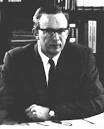
Hendrik van de Hulst |
Hendrik van de Hulst (astronomy) Hendrik van de Hulst predicts the 21 cm hyperfine line of neutral interstellar hydrogen. |
|
30 Nov 1943

Erwin Schrödinger |
Erwin Schrödinger (biology) Erwin Schrödinger publishes What is Life?, containing conceptual discussion of the genetic code and of negentropy. |
|
30 Nov 1943

lion |
lion (biology) Last known evidence for existence of the Asiatic lion in the wild in Iran (Khuzestan Province). |
|
30 Nov 1943

Americium |
Americium (chemistry) Americium discovered by Glenn T. Seaborg, et al. |
|
30 Nov 1943

Whipple Museum of the History of Science |
Whipple Museum of the History of Science (history of science) The Whipple Museum of the History of Science is established when Robert Whipple presents his collection of scientific instruments to the University of Cambridge, England. |
|
30 Nov 1943
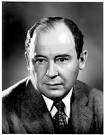
John von Neumann |
John von Neumann (mathematics) John von Neumann and Oskar Morgenstern's book Theory of Games and Economic Behavior is published by Princeton University Press. |
|
30 Nov 1943

Hans Asperger |
Hans Asperger (medicine) Hans Asperger describes Asperger syndrome. |
|
30 Nov 1943

David S. Sheridan |
David S. Sheridan (medicine) David S. Sheridan invents the disposable plastic tracheal tube catheter. |
|
30 Nov 1943
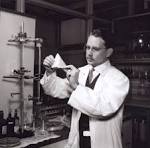
Erik Wallenberg |
Erik Wallenberg (technology) Erik Wallenberg and Ruben Rausing invent a way to package milk in paper and start the company Tetra Pak. |
|
30 Nov 1943

snorkel |
snorkel (technology) First operational use of a snorkel on a submarine. |
|
20 Jan 1944
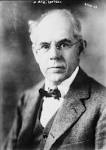
James McKeen Cattell |
death James McKeen Cattell James McKeen Cattell (born 1860), American psychologist. |
|
01 Feb 1944

Oswald T. Avery |
Oswald T. Avery (biology) Oswald T. Avery and colleagues publish the Avery–MacLeod–McCarty experiment showing that a DNA molecule can carry an inheritable trait to a living organism. This is important because many biologists thought that proteins were the hereditary material and nucleic acids too simple chemically to serve as genetic storage molecules. |
|
01 Feb 1944

Lars Onsager |
Lars Onsager (chemistry) Lars Onsager publishes the exact solution to the two-dimensional Ising model. |
|
08 Feb 1944

Howard Dalton |
birth Howard Dalton Howard Dalton (died 2008), English microbiologist. |
|
15 Feb 1944

Sigurd Hofmann |
birth Sigurd Hofmann Sigurd Hofmann, German physicist. |
|
23 Feb 1944

Leo Hendrik Baekeland |
death Leo Hendrik Baekeland Died 23 Feb 1944 at age 80 (born 14 Nov 1863). Leo Henricus Arthur Baekeland was a Belgian-American industrial chemist who invented the first thermosetting plastic, Bakelite, that did not soften when heated. His first successful invention was Velox (in the 1890's), a photographic paper that could be used with artificial light rather than sunlight, which he sold in 1899 to George Eastman for $1 million. He then experimented to find a synthetic substitute for shellac, a useful insulator of wires in electric coils. Eventually, he was able to control heat and pressure for a formaldehyde-phenol reaction. By 1909, he displayed the world's first fully synthetic plastic, which could be used not only for insulators, but moulded into buttons, knobs and countless other items. With this patented product, he helped found the modern plastics industry. |
|
01 Mar 1944

John R.F. Jeffreys |
death John R.F. Jeffreys John R.F. Jeffreys (born 1918), British mathematician and cryptanalysist. |
|
02 Mar 1944

Ida Maclean |
death Ida Maclean Ida Maclean (born 1877), English biochemist. |
|
05 Mar 1944

Ernst Cohen |
death Ernst Cohen Ernst Cohen (born 1869), Dutch Jewish chemist (in Auschwitz concentration camp). |
|
18 Mar 1944
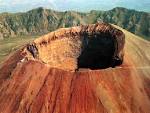
Mount Vesuvius |
Mount Vesuvius (geology) Last eruption of Mount Vesuvius. |
|
29 Mar 1944

Grace Chisholm Young |
death Grace Chisholm Young Grace Chisholm Young (born 1868), English mathematician. |
|
30 Mar 1944

Sir Charles Vernon Boys |
death Sir Charles Vernon Boys Died 30 Mar 1944 at age 89 (born 15 Mar 1855). English physicist and inventor of sensitive instruments. His studies included in mining, metallurgy, chemistry and physics. He was also self-taught in a wide knowledge of geometrical methods. In 1881, he invented the integraph, a machine for drawing the antiderivative of a function. Boys is known particularly for his definitive book (1890) on the physics soap bubbles. He employed the torsion of quartz fibres to measure minute forces, repeating (1895) Henry Cavendish's experiment, to improve the measurement of the Newtonian gravitational constant. He also invented an improved automatic recording calorimeter for testing city coal gas (1905) and high-speed cameras to photograph rapidly moving objects, such as bullets and lightning discharges. He was knighted in 1935. Upon retirement in 1939, he grew and studied garden weeds. |
|
19 May 1944

Godfrey Wilson |
death Godfrey Wilson Died 19 May 1944 (born 1908). British anthropologist and analyst of social change in Africa. As first director of the Rhodes-Livingstone Institute in Zambia, he theorized that the social problems in Africa were the products of colonialism and that the processes of industrialization and labor migration encompassed these social problems. His study of the cattle owning Nyakyusa of the Southern Highlands Province of Tanganyika Territory was made in 1936. It is much concerned with an account of marriage customs and sex relations, and described the peculiar traditional chiefdom. He committed suicide, as a conscientious objector in WW II. |
|
01 Jun 1944

Colin Blakemore |
birth Colin Blakemore Colin Blakemore, English neuroscientist. |
|
05 Jun 1944

Group Captain |
Group Captain (meteorology) Group Captain James Stagg correctly forecasts a brief improvement in weather conditions over the English Channel which permits the following day's Normandy landings to take place. |
|
18 Jun 1944

Harry Fielding Reid |
death Harry Fielding Reid Harry Fielding Reid (born 1859), American geophysicist. |
|
07 Jul 1944
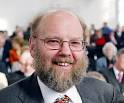
Ian Wilmut |
birth Ian Wilmut Born 7 Jul 1944. English embryologist who in 1996 supervised the team of scientists that produced a lamb named Dolly, the first mammal cloned from a cell from an adult. Dolly birth at the Roslin Institute, Edinburgh, Scotland, on 5 Jul 1996, was announced on 23 Feb 1997. The key work was performed by microbiologist Keith Campbell. |
|
13 Jul 1944

Ernő Rubik |
birth Ernő Rubik Ernő Rubik, Hungarian inventor and architect. |
|
07 Aug 1944

IBM |
IBM (computer science) IBM dedicates the first program-controlled calculator, the Automatic Sequence Controlled Calculator, best known as the Harvard Mark I. |
|
24 Aug 1944

Gregory Jarvis |
birth Gregory Jarvis Gregory Jarvis (died 1986), American astronaut. |
|
08 Sep 1944

V-2 rocket |
V-2 rocket (technology) First operational use of the V-2 rocket, the first ballistic missile. |
|
16 Oct 1944

Elizabeth Loftus |
birth Elizabeth Loftus Elizabeth Loftus, American psychologist. |
|
02 Nov 1944
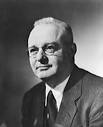
Thomas Midgley, Jr. |
death Thomas Midgley, Jr. Thomas Midgley, Jr. (born 1889), American chemist and inventor. |
|
19 Nov 1944
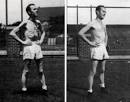
Minnesota Starvation Experiment |
Minnesota Starvation Experiment (medicine) Minnesota Starvation Experiment begins. |
|
22 Nov 1944
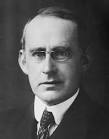
Arthur Eddington |
death Arthur Eddington Sir Arthur Eddington (born 1882), English astrophysicist. |
|
09 Dec 1944
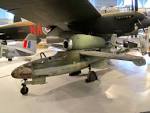
Heinkel He 162 |
Heinkel He 162 (technology) First flight of the Heinkel He 162 Volksjäger, the second jet engined fighter aircraft to be introduced by the Luftwaffe in World War II. |